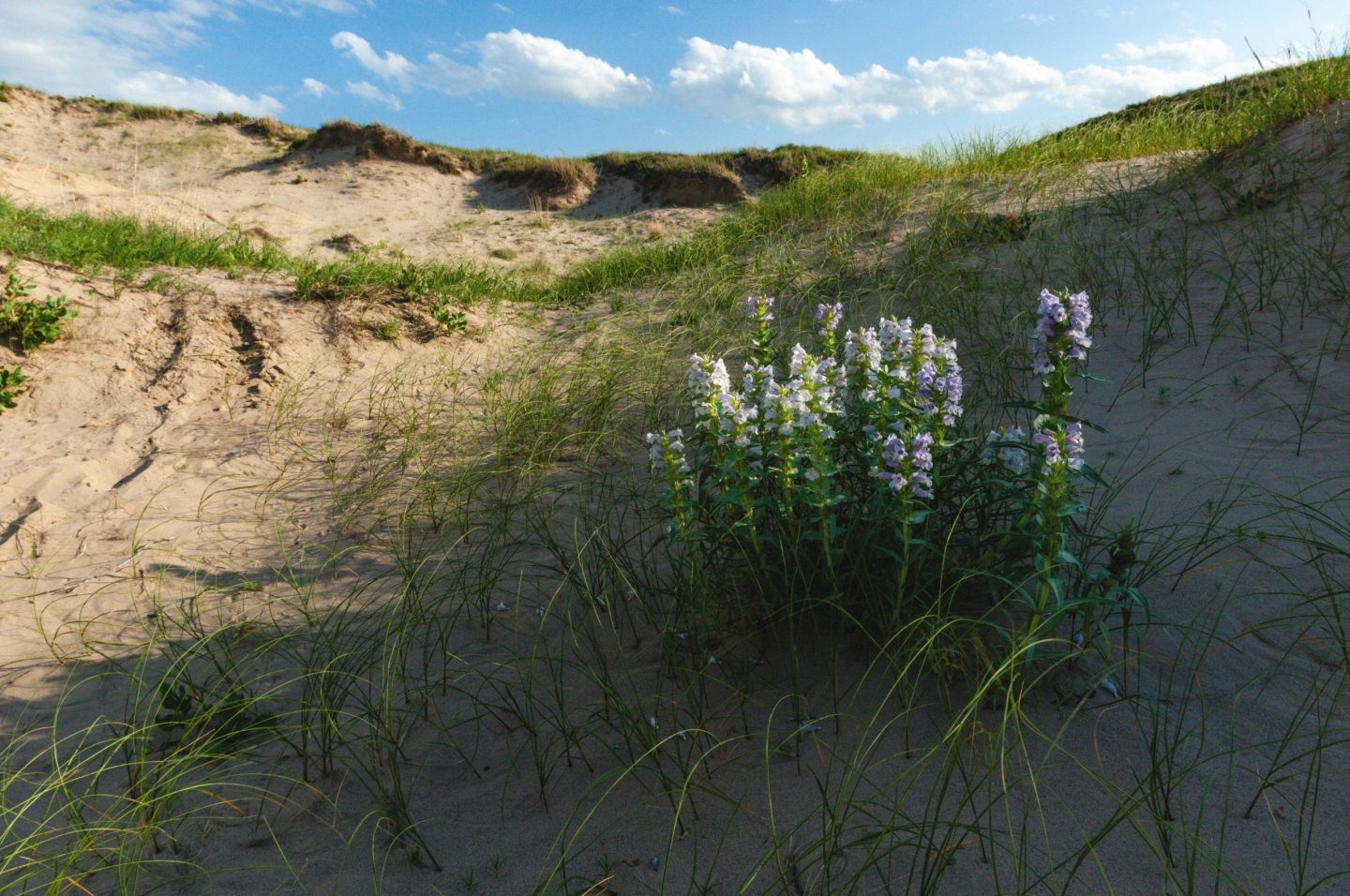
By Ruby Rolland, Environmental Specialist, Nebraska Game and Parks
Nebraska lists 32 plant and animal species as threatened or endangered. The blowout penstemon, a species of flowering plant, is listed as endangered in the state of Nebraska and can be found in a variety of Nebraska’s northwestern counties within the Sandhills.
Where most other plants would wither, perish and be swept away by the wind, the blowout penstemon and its lavender blooms rise like a victory flag from one of the Sandhills’ most harsh ecosystems, an open and generally bare sand blowout.
Blowouts are a unique habitat feature born when topsoil loses its grip, and northwesterly winds swirl across the exposed surface of the sandhills to carve out a sandy crater. Tumbling amongst the grains of sand, blowout penstemon seeds are “scarified” or sanded down, and when settled into the earth, seedlings burst free of their thinned shells to take root. A pioneer species, the blowout penstemon was traditionally one of the first plants to colonize these sandy hollows.
As they spread by their roots, the plants quickly stabilize and branch out to withstand the eroding winds. Being the first to grow, the penstemon receives all the sun, nutrients and pollinators it wants; however, as time goes on and the blowout begins to form topsoil once again, the blowout penstemon proves to be a poor competitor and eventually dies. While you may think its rather submissive lifestyle must be the reason for the penstemon’s decline, it is actually the decline in blowout formation that has pushed this plant to the brink.
Today, the sandy blowouts this penstemon needs are less common as the wildfire and grazing bison that historically drove their creation have been eliminated from the landscape. Cattle now replace the bison, but do not graze in the same pattern or intensity, and while landowners are making strides with prescribed fire to restore grass and fight red cedar, it is still very hard to mimic historic fire regimes in a space as large as the Sandhills.
But all is not lost. Partners across the Sandhills have been working together to devise new grazing rotations, burn plans, transplantation of hand-raised penstemon, and maintenance of shifting blowouts already on the landscape. Advances in rangeland management and knowledge of the natural history of the Sandhills have continued to evolve and grow since the 1987 listing of this plant, and this author looks forward to what future landowners and biologists may bring to the conservation of blowout penstemon.
For more information, visit OutdoorNebraska.gov.
